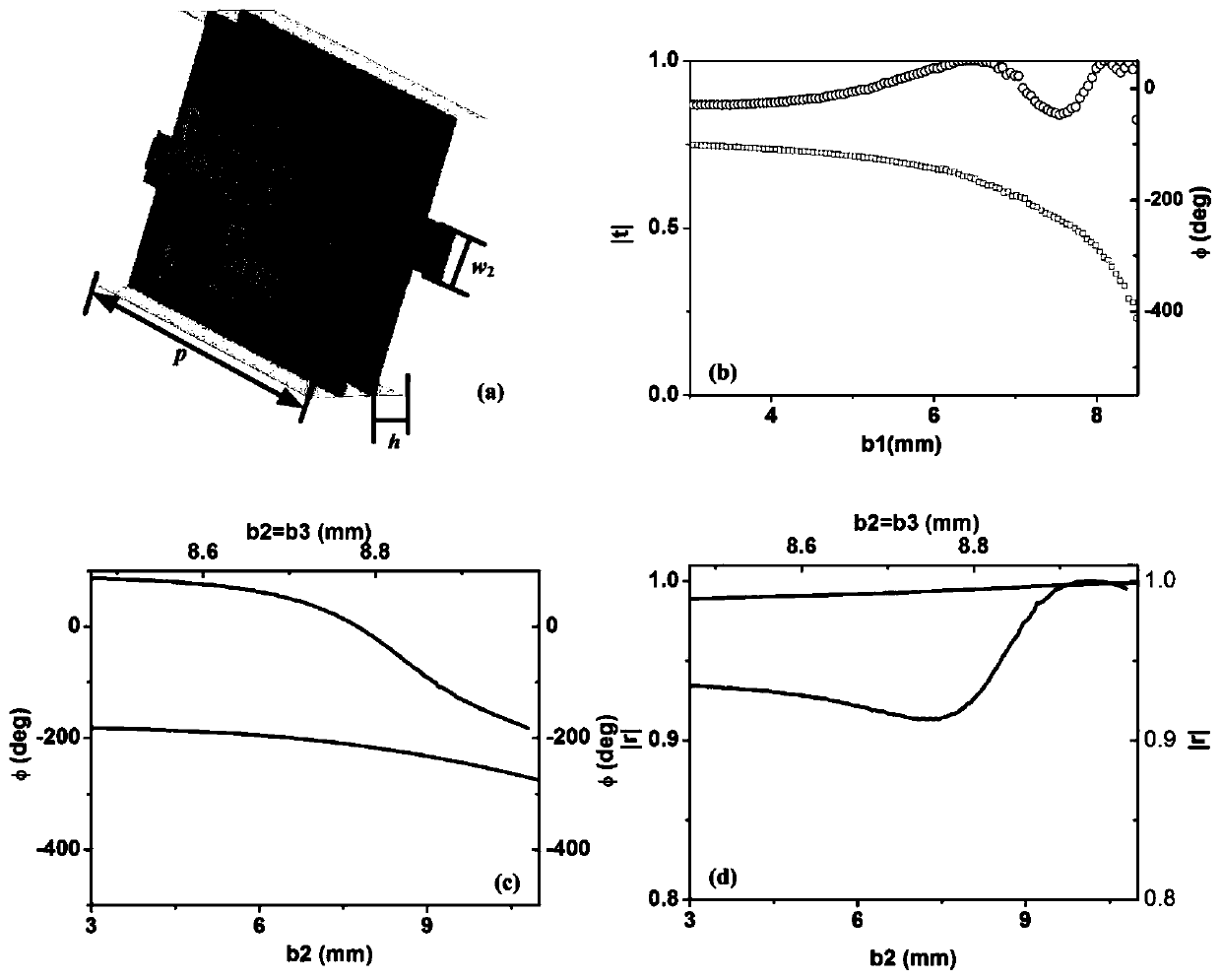Design method and application of a transmission-reflection gradient metasurface unit
A reflective gradient and design method technology, applied in the field of communication, can solve the problem of single function of the gradient plate, and achieve the effect of expanding the research scope and high efficiency
- Summary
- Abstract
- Description
- Claims
- Application Information
AI Technical Summary
Problems solved by technology
Method used
Image
Examples
Embodiment 1
[0029] Embodiment 1 Transmission-reflection gradient metasurface unit design
[0030] For the design of TRGMS, the key factors to consider are three aspects. One is to realize the transmission and reflection characteristics at the same time, and the two cannot interact with each other to ensure the high efficiency of the system; the other is that no matter for the transmission system or the reflection system, the phase coverage must exceed 360° to ensure the arbitrary manipulation of the metasurface to the beam; The third is that the transmission and reflection coefficients need to be kept at a very high level to ensure the high efficiency of different functions. Considering the above three points, we designed the image 3 TRGMS unit. The unit is realized by a 4-layer orthogonal cascaded patch structure, and the unit period p=p=11mm, w 1 = 4mm, w 2 = 3mm, the dielectric board is an F4B dielectric board with a thickness of h=1.5mm, a dielectric constant of 2.65, and a metal...
Embodiment 2
[0031] Embodiment 2 Transmission-reflection beam deflector design
[0032] Based on the TRGMS unit designed above, different transmission-reflection functional devices with excellent performance can be designed. Here, the full-space transmission-reflection beam deflector is taken as an example to verify the powerful beam control capability of TRGMS. For the reflective system, the phase gradient is along the x direction, a superunit is composed of 6 basic units, and the phase gradient is -60°, taking two superunits as an example, Figure 4 (c) The amplitude and phase distribution of the reflection unit is given. The simulated (theoretical) reflection phase is in good agreement, and the reflection amplitude is better than 0.93; for the transmission system, the gradient is along the y direction, and the phase gradient is -60°. The cells are arranged along the x-direction, and the transmission phase and transmission amplitude are as Figure 4 As shown in (d), the simulated (theor...
PUM
 Login to View More
Login to View More Abstract
Description
Claims
Application Information
 Login to View More
Login to View More - R&D
- Intellectual Property
- Life Sciences
- Materials
- Tech Scout
- Unparalleled Data Quality
- Higher Quality Content
- 60% Fewer Hallucinations
Browse by: Latest US Patents, China's latest patents, Technical Efficacy Thesaurus, Application Domain, Technology Topic, Popular Technical Reports.
© 2025 PatSnap. All rights reserved.Legal|Privacy policy|Modern Slavery Act Transparency Statement|Sitemap|About US| Contact US: help@patsnap.com



